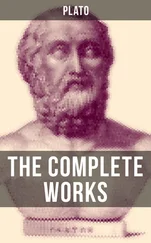Chapter XV. The Real And The Apparent Man
( Delivered in New York )
Here we stand, and our eyes look forward sometimes miles ahead. Man has been doing that since he began to think. He is always looking forward, looking ahead. He wants to know where he goes even after the dissolution of his body. Various theories have been propounded, system after system has been brought forward to suggest explanations. Some have been rejected, while others have been accepted, and thus it will go on, so long as man is here, so long as man thinks. There is some truth in each of these systems. There is a good deal of what is not truth in all of them. I shall try to place before you the sum and substance, the result, of the inquiries in this line that have been made in India. I shall try to harmonise the various thoughts on the subject, as they have come up from time to time among Indian philosophers. I shall try to harmonise the psychologists and the metaphysicians, and, if possible, I shall harmonise them with modern scientific thinkers also.
The one theme of the Vedanta philosophy is the search after unity. The Hindu mind does not care for the particular; it is always after the general, nay, the universal. “What is that, by knowing which everything else is to be known?” That is the one theme. “As through the knowledge of one lump of clay all that is of clay is known, so, what is that, by knowing which this whole universe itself will be known?” That is the one search. The whole of this universe, according to the Hindu philosophers, can be resolved into one material, which they call Âkâsha. Everything that we see around us, feel, touch, taste, is simply a differentiated manifestation of this Akasha. It is all-pervading, fine. All that we call solids, liquids, or gases, figures, forms, or bodies, the earth, sun, moon, and stars — everything is composed of this Akasha.
What force is it which acts upon this Akasha and manufactures this universe out of it? Along with Akasha exists universal power; all that is power in the universe, manifesting as force or attraction — nay, even as thought — is but a different manifestation of that one power which the Hindus call Prâna. This Prana, acting on Akasha, is creating the whole of this universe. In the beginning of a cycle, this Prana, as it were, sleeps in the infinite ocean of Akasha. It existed motionless in the beginning. Then arises motion in this ocean of Akasha by the action of this Prana, and as this Prana begins to move, to vibrate, out of this ocean come the various celestial systems, suns, moons, stars, earth, human beings, animals, plants, and the manifestations of all the various forces and phenomena. Every manifestation of power, therefore, according to them, is this Prana. Every material manifestation is Akasha. When this cycle will end, all that we call solid will melt away into the next form, the next finer or the liquid form; that will melt into the gaseous, and that into finer and more uniform heat vibrations, and all will melt back into the original Akasha, and what we now call attraction, repulsion, and motion, will slowly resolve into the original Prana. Then this Prana is said to sleep for a period, again to emerge and to throw out all those forms; and when this period will end, the whole thing will subside again. Thus this process of creation is going down, and coming up, oscillating backwards and forwards. In the language of modern science, it is becoming static during one period, and during another period it is becoming dynamic. At one time it becomes potential, and at the next period it becomes active. This alteration has gone on through eternity.
Yet, this analysis is only partial. This much has been known even to modern physical science. Beyond that, the research of physical science cannot reach. But the inquiry does not stop in consequence. We have not yet found that one, by knowing which everything else will be known. We have resolved the whole universe into two components, into what are called matter and energy, or what the ancient philosophers of India called Akasha and Prana. The next step is to resolve this Akasha and the Prana into their origin. Both can be resolved into the still higher entity which is called mind. It is out of mind, the Mahat, the universally existing thought-power, that these two have been produced. Thought is a still finer manifestation of being than either Akasha or Prana. It is thought that splits itself into these two. The universal thought existed in the beginning, and that manifested, changed, evolved itself into these two Akasha and Prana: and by the combination of these two the whole universe has been produced.
We next come to psychology. I am looking at you. The external sensations are brought to me by the eyes; they are carried by the sensory nerves to the brain. The eyes are not the organs of vision. They are but the external instruments, because if the real organ behind, that which carries the sensation to the brain, is destroyed, I may have twenty eyes, yet I cannot see you. The picture on the retina may be as complete as possible, yet I shall not see you. Therefore, the organ is different from its instruments; behind the instruments, the eyes, there must be the organ So it is with all the sensations. The nose is not the sense of smell; it is but the instrument, and behind it is the organ. With every sense we have, there is first the external instrument in the physical body; behind that in the same physical body, there is the organ; yet these are not sufficient. Suppose I am talking to you, and you are listening to me with close attention. Something happens, say, a bell rings; you will not, perhaps, hear the bell ring. The pulsations of that sound came to your ear, struck the tympanum, the impression was carried by the nerve into the brain; if the whole process was complete up to carrying the impulse to the brain, why did you not hear? Something else was wanting — the mind was not attached to the organ. When the mind detaches itself from the organ, the organ may bring any news to it, but the mind will not receive it. When it attaches itself to the organ, then alone is it possible for the mind to receive the news. Yet, even that does not complete the whole. The instruments may bring the sensation from outside, the organs may carry it inside, the mind may attach itself to the organ, and yet the perception may not be complete. One more factor is necessary; there must be a reaction within. With this reaction comes knowledge. That which is outside sends, as it were, the current of news into my brain. My mind takes it up, and presents it to the intellect, which groups it in relation to pre-received impressions and sends a current of reaction, and with that reaction comes perception. Here, then, is the will. The state of mind which reacts is called Buddhi, the intellect. Yet, even this does not complete the whole. One step more is required. Suppose here is a camera and there is a sheet of cloth, and I try to throw a picture on that sheet. What am I to do? I am to guide various rays of light through the camera to fall upon the sheet and become grouped there. Something is necessary to have the picture thrown upon, which does not move. I cannot form a picture upon something which is moving; that something must be stationary, because the rays of light which I throw on it are moving, and these moving rays of light, must be gathered, unified, co-ordinated, and completed upon something which is stationary. Similar is the case with the sensations which these organs of ours are carrying inside and presenting to the mind, and which the mind in its turn is presenting to the intellect. This process will not be complete unless there is something permanent in the background upon which the picture, as it were, may be formed, upon which we may unify all the different impressions. What is it that gives unity to the changing whole of our being? What is it that keeps up the identity of the moving thing moment after moment? What is it upon which all our different impressions are pieced together, upon which the perceptions, as it were, come together, reside, and form a united whole? We have found that to serve this end there must be something, and we also see that that something must be, relatively to the body and mind, motionless. The sheet of cloth upon which the camera throws the picture is, relatively to the rays of light, motionless, else there will be no picture. That is to say, the perceiver must be an individual. This something upon which the mind is painting all these pictures, this something upon which our sensations, carried by the mind and intellect, are placed and grouped and formed into a unity, is what is called the soul of man.
Читать дальше












